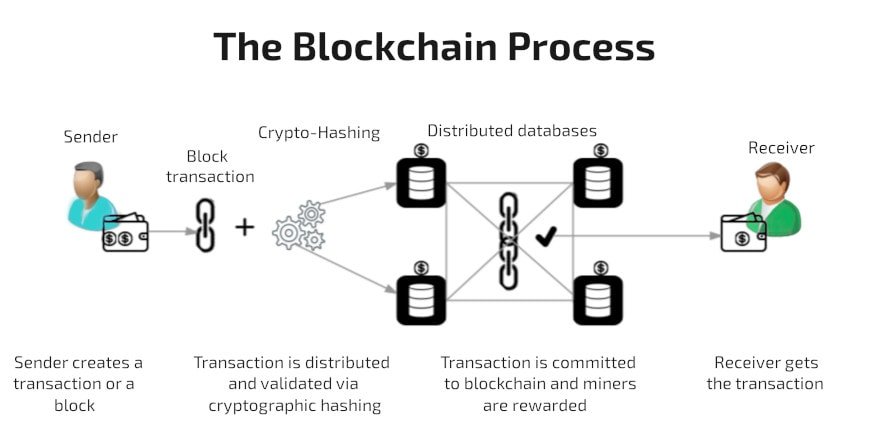- Do all cryptocurrencies use blockchain
- Cryptocurrencies all
- Why do all cryptocurrencies rise and fall together
Are all cryptocurrencies mined
Related Links Are you ready to learn more? Visit our glossary and crypto learning center. Are you interested in the scope of crypto assets? Investigate our list of cryptocurrency categories https://portal-credo.info/live-casino/poker/. Are you interested in knowing which the hottest dex pairs are currently?
NFTs are multi-use images that are stored on a blockchain. They can be used as art, a way to share QR codes, ticketing and many more things. The first breakout use was for art, with projects like CryptoPunks and Bored Ape Yacht Club gaining large followings. We also list all of the top NFT collections available, including the related NFT coins and tokens.. We collect latest sale and transaction data, plus upcoming NFT collection launches onchain. NFTs are a new and innovative part of the crypto ecosystem that have the potential to change and update many business models for the Web 3 world.
Here at CoinMarketCap, we work very hard to ensure that all the relevant and up-to-date information about cryptocurrencies, coins and tokens can be located in one easily discoverable place. From the very first day, the goal was for the site to be the number one location online for crypto market data, and we work hard to empower our users with our unbiased and accurate information.
Cryptocurrencies are digital assets that are secured by cryptography. They use decentralized networks to transfer and store value, and the transactions are recorded in a publicly distributed ledger known as the blockchain. Transactions are verified by network nodes and recorded in a public distributed ledger known as the blockchain. Cryptocurrency transactions are secure, and are verified by a decentralized network of computers.
Do all cryptocurrencies use blockchain
The settlement and clearing process for stock traders can take up to three days (or longer if trading internationally), meaning that the money and shares are frozen for that period. Blockchain can, in theory, drastically reduce that time.
As we head into the third decade of blockchain, it’s no longer a question of if legacy companies will catch on to the technology—it’s a question of when. Today, we see a proliferation of NFTs and the tokenization of assets. Tomorrow, we may see a combination of blockchains, tokens, and artificial intelligence all incorporated into business and consumer solutions.
The name blockchain is hardly accidental: The digital ledger is often described as a “chain” that’s made up of individual “blocks” of data. As fresh data is periodically added to the network, a new “block” is created and attached to the “chain.” This involves all nodes updating their version of the blockchain ledger to be identical.

The settlement and clearing process for stock traders can take up to three days (or longer if trading internationally), meaning that the money and shares are frozen for that period. Blockchain can, in theory, drastically reduce that time.
As we head into the third decade of blockchain, it’s no longer a question of if legacy companies will catch on to the technology—it’s a question of when. Today, we see a proliferation of NFTs and the tokenization of assets. Tomorrow, we may see a combination of blockchains, tokens, and artificial intelligence all incorporated into business and consumer solutions.
The name blockchain is hardly accidental: The digital ledger is often described as a “chain” that’s made up of individual “blocks” of data. As fresh data is periodically added to the network, a new “block” is created and attached to the “chain.” This involves all nodes updating their version of the blockchain ledger to be identical.
Cryptocurrencies all
Related Links Are you ready to learn more? Visit our glossary and crypto learning center. Are you interested in the scope of crypto assets? Investigate our list of cryptocurrency categories. Are you interested in knowing which the hottest dex pairs are currently?
The UK’s Financial Conduct Authority estimated there were over 20,000 different cryptocurrencies by the start of 2023, although many of these were no longer traded and would never grow to a significant size.
The very first cryptocurrency was Bitcoin. Since it is open source, it is possible for other people to use the majority of the code, make a few changes and then launch their own separate currency. Many people have done exactly this. Some of these coins are very similar to Bitcoin, with just one or two amended features (such as Litecoin), while others are very different, with varying models of security, issuance and governance. However, they all share the same moniker — every coin issued after Bitcoin is considered to be an altcoin.
Why do all cryptocurrencies rise and fall together
Most cryptocurrencies implement mechanisms to limit supply and prevent inflation. For instance, Bitcoin (BTC) is designed to have a fixed maximum supply (21 million BTC), after which mining more becomes impossible.
Historically, bitcoin halvings have triggered long-term price increases. For instance, notable price surges occurred after the 2012, 2016, and 2020 halving events. However, these events can also cause short-term market corrections. The 2024 halving, for example, stabilized bitcoin’s daily issuance at around 450–470 BTC per day, reflecting the predictable nature of its supply schedule. Typically, bitcoin’s value increases 12 to 18 months after a halving, making these events a focal point for investors.
Interestingly, not all investors experience the same outcomes. A recent study revealed that 57% of cryptocurrency investors made money in the past year, while 16% broke even, and 14% reported losses. These statistics highlight how demand and trading activity directly influence price dynamics in the cryptocurrency market.
Since very few commercial outlets and entities worldwide accept cryptocurrencies for typical purchases, they tend to trade more like speculative assets than traditional fiat currencies that have state backing and widespread commercial use cases.
Yes! Social media posts, especially from influential figures, can spark massive price changes. For example, Elon Musk’s tweets about Bitcoin and Dogecoin caused their prices to skyrocket within hours.
